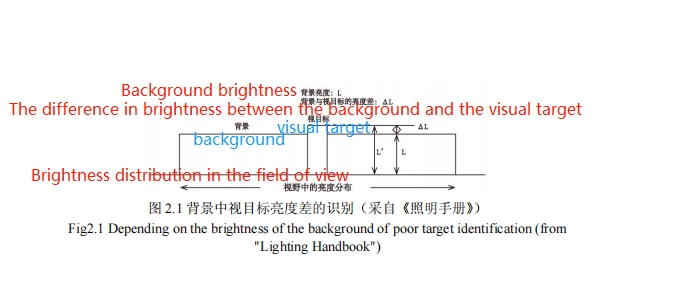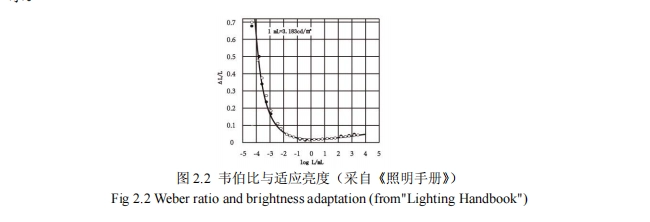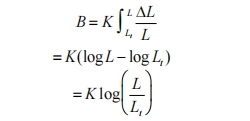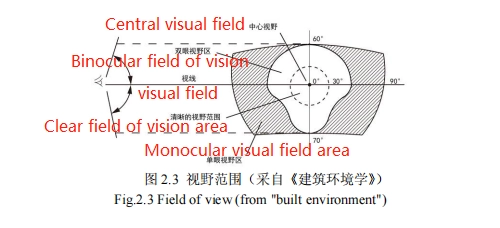Vision is the most important of the various human senses, people rely on vision to obtain more than 80% of the information from the outside world, and 75% to 90% of human activities are dominated by vision. There are many factors that affect people's visual performance, in addition to external observation conditions such as visual field brightness size, viewing angle, luminance, luminance contrast, color contrast, etc., it is also related to the level of visual adaptation and adaptation state, the activation degree of two types of photoreceptor cells in human eyes, and the optic nerve transmission process.
Brightness Threshold Of Outdoor LED Display Panels
For large targets of outdoor LED display panels that appear in the eye for long periods of time, the visual threshold luminance is 10-6 cd/m2. Under the condition that the presentation time is less than The visual threshold value obeys Rico's law under the condition that the presentation time is less than 0.1s and the viewing angle does not exceed 1°, i.e., luminance × area = constant number. It also obeys the Bunsen-Rothko law, i.e., luminance × time = constant. This means that the smaller the target, or the shorter the presentation time, the higher the luminance required to elicit visual perception.
The upper limit of visual tolerable LED display panels brightness is about 106 cd/m2. Beyond this value, the retina can be damaged by excessive radiation. In fact, we, In fact, the difference in brightness of natural scenes we see every day is generally within 1:1000.
Brightness Contrast Recognition Of Outdoor LED Display Panels
Any visual target has its background. The difference in brightness or color between the target and the background is the basic condition for us to be able to The difference in luminance or color between the target and the background is the basic condition for us to be able to perceive everything in the world visually. The former is the luminance contrast and the latter is the color contrast. The following The following discussion is about the luminance contrast recognition problem.
The increment of brightness that can be recognized exactly is called the recognition threshold. The smaller the recognition threshold, the more levels of luminance the vision can recognize. The smaller the recognition threshold, the more levels of brightness the vision can recognize, and the more information it can obtain from the visual object so that small changes in brightness can be perceived. On the contrary, It is desirable to be able to acquire the appropriate value.
The recognition threshold of luminance contrast varies with the adaptation luminance (background luminance), the size and color of the visual object, the observation time, etc. Generally, the higher and larger the luminance of the visual object, and the longer the observation time, the lower the recognition threshold. The method of measuring the luminance contrast recognition threshold is schematically shown in Figure 2.1.

In the case that the luminance of the visual object gradually increases with respect to the background luminance, the accuracy of being able to recognize the luminance difference becomes lower when the increment is small and higher when the increment is large until it is finally fully recognized. The incremental value at which the recognition accuracy is usually 50% is called the recognition threshold.
This corresponds to recognizing just the perceptible difference between the quantitative and qualitative luminance differences of the visual object(jnd: just noticeable difference). This recognition threshold is the luminance contrast of the base.

The jnd value of the above luminance contrast is called the Weber ratio. The relationship between luminance and the Weber ratio is shown in Figure 2.2.

The Weber ratio is large where the luminance is low, the recognition of the luminance contrast is poorly perceived, and the curvature of the curve is known to be different from the brighter parts are different, which is mainly due to the action of the optic rod cells that are able to perceive the luminance and their difference.
As the luminance becomes progressively larger while the visual vertebral cells begin to function, the Weber ratio becomes smaller. In the state of bright vision, Almost a constant value can be obtained. The C value of the following equation varies depending on the observation conditions and is generally 0.01 to 0.05.

This is Weber's law concerning the recognition of brightness. If the sensed luminance corresponding to the recognition threshold is considered to increase by a certain amount, the following equation holds.

but B is the increase in luminance. If for the above equation from the absolute threshold limit Lt to L integral.

This is proportional to the logarithm of the perceived brightness, which is named after the discoverer of Fechner′s law, or Weber-Fechner′s law.
Perspectives Of Outdoor LED Display Panels
The range of space perceived by the human eye when the head and eyes are not moving is called the visual field (Figure 2.3). The visual field that both eyes can see at the same time (binocular field) is about 120° in extent. The sight around 1 ° ~ 5 ° within the object can be imaged in the retinal center concave, the highest clarity, this part is called the central field of view; target deviation from the central field of view outside the viewing, called the peripheral vision. The sight around 30 ° outdoor LED display panels visual environment, clarity is also better.
The human eye to observe the outdoor LED display panels, always make the fine part of the outdoor LED display panels in the center of the field of view, in order to obtain a high degree of clarity. Therefore it is often necessary to turn the eye and even to turn the head. But the eye cannot selectively take the view and discard what it does not want to see. Both the central field of view and the peripheral field of view are reflected on the retina at the same time, so the illumination of the surroundings also has an important effect on visual efficacy.

Visual Response To Outdoor LED Display Panels Intermittent Light
When people observe the outdoor LED display panels' periodic fluctuation light stimulation, the outdoor LED display panels' fluctuation frequency of the lower light, can obviously feel the light flicker; frequency increases, producing flicker sense; further increasing the frequency, flicker sense disappears, fluctuation light is seen as constant light. The lowest frequency at which periodic fluctuating light does not subjectively cause flicker is called the critical flicker frequency.
The critical flicker frequency is related to the brightness of the outdoor LED display panels fluctuating light (or the illumination on the human retina), the waveform of the fluctuating light, and the amplitude. At low luminance, the critical flicker frequency is also related to the color. When viewing the dynamic picture of outdoor LED display panels, when the screen luminance is less than 20cd/m2, at a frequency of 18 frames per second, the vision can not detect flicker; when the outdoor LED display panels When the luminance increases to 200cd/m2, the flicker phenomenon can be felt visually.
For periodic light stimuli with frequencies greater than the critical flicker frequency, the visually perceived constant luminosity L is:

In the formula, L(t) is the periodic luminosity; T is the flicker period.
In the outdoor LED display panels photometric measurement is often to determine whether the brightness of the two luminance fields are equal. For this purpose, the two luminance fields alternate in the observation field of view, and when the visual perception of the luminance is not flickered, the two luminance can be considered equal. Therefore, it is necessary to consider the visually distinguishable luminance difference under the different fields of view luminance and flicker frequency.








